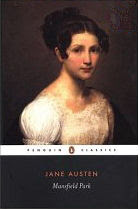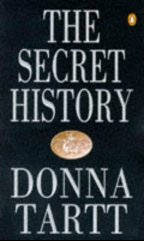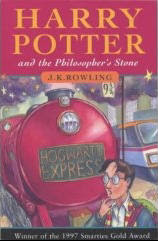I’ve seen it done on other blogs, but never thought I’d do it on mine. Multiple book reviews in one post, that is. It always seemed like cheating; but I’m six behind, and short on time thanks to a backlog of library and challenge reading, and all the work I’m starting to put into wading through the morass of confusion that is end-of-university job hunting, and the dilemma of whether to stay in Queensland or to move out for the first time into a state where I won’t know anyone.
But I digress. I am far enough in arrears, review-wise, to divide up the backlog into two sets of three. (I should point out, this was not my fault; I had a violent allergic reaction to something and spent over a week itching terribly and unable to do much of anything.) So I now present abbreviated reviews of:
The Maltese Falcon by Dashiell Hammett
New Year’s Reading Resolutions #19
 Sam Spade’s day takes a turn for the worse when his partner is murdered while tailing Floyd Thursby, the man who supposedly ran off with the sister of their client, Miss Wonderly. Shortly afterward, Thursby is also killed, and certain members of San Francisco’s finest think that perhaps Spade shot one or the other - or both. Naturally Spade has no intention of being charged with anything, and fends off the police while burrowing through a mass of lies, false identities, double-crossing and greed. The whole affair centres around the object of that greed: the Maltese Falcon, a masterpiece of gold and jewels disguised as a piece in black enamel. A lot of people want it, and none of them much care how they go about getting it. One thing, though, is certain: someone will be going down for those murders. And it’s not going to be Spade.
Sam Spade’s day takes a turn for the worse when his partner is murdered while tailing Floyd Thursby, the man who supposedly ran off with the sister of their client, Miss Wonderly. Shortly afterward, Thursby is also killed, and certain members of San Francisco’s finest think that perhaps Spade shot one or the other - or both. Naturally Spade has no intention of being charged with anything, and fends off the police while burrowing through a mass of lies, false identities, double-crossing and greed. The whole affair centres around the object of that greed: the Maltese Falcon, a masterpiece of gold and jewels disguised as a piece in black enamel. A lot of people want it, and none of them much care how they go about getting it. One thing, though, is certain: someone will be going down for those murders. And it’s not going to be Spade.
In a word: fantastic. It lives up to its reputation as the great crime novel. The writing is somewhat sparse, focussed on concrete details, but works beautifully and manages to convey a strong sense of character. Sam Spade is very cool, strolling through the plot unfazed by much of anything - except his partner’s tearful widow. The three other main characters are also memorable. Gutman seems like a stereotypical jolly fat man but is consumed by an obsessive avarice. Joel Cairo is an opportunist who doesn’t let his lack of experience in such dealings deter him, no matter how many times he winds up at the wrong end of his own gun. And Brigid O’Shaughnessy is a femme fatale as likely to seduce a man as hit him over the head. The plot progresses at a steady pace and takes not one but several turns before the end. Anyone who likes a good whodunit should read this.
Rating: A+
Three Comedies by Ben Jonson
 Jonson’s three greatest comedies in one volume, all featuring the common thread of scammers and con artists on the hunt for dupes. The title character in Volpone is a rich man without family, who amuses himself by feigning illness and dangling the prospect of inheritance before several people. In The Alchemist, a servant takes over the house in his master’s absence, setting up with a couple of accomplices as magicians and parting the gullible from their cash. And Bartholomew Fair follows a group of members of and visitors to the Fair, all of them blissfully unaware of the disguised Justice in their midst.
Jonson’s three greatest comedies in one volume, all featuring the common thread of scammers and con artists on the hunt for dupes. The title character in Volpone is a rich man without family, who amuses himself by feigning illness and dangling the prospect of inheritance before several people. In The Alchemist, a servant takes over the house in his master’s absence, setting up with a couple of accomplices as magicians and parting the gullible from their cash. And Bartholomew Fair follows a group of members of and visitors to the Fair, all of them blissfully unaware of the disguised Justice in their midst.
I enjoyed Volpone, although it was difficult at times to keep track of who was who and who was up to what. The Alchemist was highly confusing, filled with the jargon of the titular profession. It would have been impossible to fully annotate - the notes would have been nearly as long as the play - and I could understand the editor’s reasoning that since the patter of the charlatans was meant to be obfuscatory, a bit of puzzlement doesn’t matter. But I don’t like being unable to make sense of things, and it’s hard to read something when you can’t make head or tail of it. At least partly because of this, it was hard to follow the characters and goings-on of the play. Bartholomew Fair was nearly as bad, because of the enormous cast.
Rating: C- (But I will say that I think a different edition might have been easier to read, and I’m sure they’re much easier to follow on stage).
Down Under by Bill Bryson
 Having long been fascinated by Australia, Bryson finally decided to have a good look around the place. He sequence of visits involved a transcontinental rail journey on the Indian Pacific with a stopover in the arid west of New South Wales; a drive between the major cities of the south-east; a visit to tropical Queensland that didn’t quite go to plan; a road trip from Darwin to Alice Springs; and more motoring along the West Australian coast. He covered only a tiny portion of the country, but quite a variety of its contents. The whole account is filled with humour, disasters, interesting facts, and an unshakeable awareness of just how many ways there are here in which to die an agonising death.
Having long been fascinated by Australia, Bryson finally decided to have a good look around the place. He sequence of visits involved a transcontinental rail journey on the Indian Pacific with a stopover in the arid west of New South Wales; a drive between the major cities of the south-east; a visit to tropical Queensland that didn’t quite go to plan; a road trip from Darwin to Alice Springs; and more motoring along the West Australian coast. He covered only a tiny portion of the country, but quite a variety of its contents. The whole account is filled with humour, disasters, interesting facts, and an unshakeable awareness of just how many ways there are here in which to die an agonising death.
I loved this; it was a wonderful opportunity to find out how Australia looks to an outsider. Sadly my hometown didn’t create a good first impression (so bad, in fact, that he amused himself in the hotel bar inventing slogans like ‘Canberra - Why Wait for Death?’). And I do have to admit that if you’re looking for nightlife, Canberra’s not a good place to start. But he did see the light: “I had been scorning it for what was in fact its most remarkable achievement. This was a place that had, without a twitch of evident stress, multiplied by a factor of ten since the late 1950s and yet was still a park.”. Unfortunately Bryson never made it to Brisbane, so I didn’t get to see him turn his wit on another place I know.
He did, however, get to Cairns, so I got a fabulously funny and dead-on view of Queenslanders and the paranoid persecution complex with which a lot of them regard those dastardly southerners. It was one of a number of things which had me thinking ‘Yes! That’s just what it’s like.’ (Case in point: the persistence of Australian flies.) There was also much that was new to me, such as the mystery of the explorer Stuart, who thought that he and his men were the first Europeans ever to reach the red centre - until they bumped into some locals who greeted them with Freemason signs and knew how to tie bootlaces. And it was interesting to see how alarming many of the things which I regard as normal - the risk of dengue fever, redback spiders, the admonition to freeze if confronted by a snake - must seem to people not accustomed to them.
Rating: A-
 Philip Ashley’s cousin Ambrose goes to Italy in search of a healthier climate, he winds up married. Half-English Rachel is a distant connection of the family and the widow of the Count Sangaletti. At firs all seems well; then Philip begins receiving odd letters from Ambrose that prompt him to make a dash across the Continent. But in the time before trains such journeys were slow, and by the time he arrives Ambrose is dead, Rachel is gone, and Philip is very suspicious. Returning to England, he learns that Rachel is on her way to Cornwall and decides to confront her. But when he meets her she charms him at once, causing him to forget that she might be a murderess. Indeed, to the horror of his guardian he becomes quite besotted, though for everything that seems to prove her innocence there is something else to suggest her guilt. It will take a decisive piece of evidence for him to decide one way or another.
Philip Ashley’s cousin Ambrose goes to Italy in search of a healthier climate, he winds up married. Half-English Rachel is a distant connection of the family and the widow of the Count Sangaletti. At firs all seems well; then Philip begins receiving odd letters from Ambrose that prompt him to make a dash across the Continent. But in the time before trains such journeys were slow, and by the time he arrives Ambrose is dead, Rachel is gone, and Philip is very suspicious. Returning to England, he learns that Rachel is on her way to Cornwall and decides to confront her. But when he meets her she charms him at once, causing him to forget that she might be a murderess. Indeed, to the horror of his guardian he becomes quite besotted, though for everything that seems to prove her innocence there is something else to suggest her guilt. It will take a decisive piece of evidence for him to decide one way or another.
























